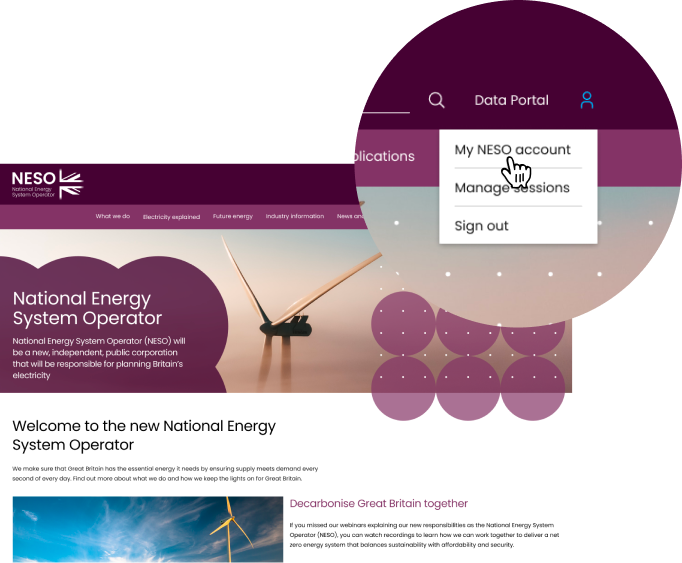Generative AI Discovery
Project summary
Generative AI (Gen AI) creates diverse, realistic artifacts across various domains, including images, video, music, speech, text, etc.
| Name | Status | Project reference number | Start date | Proposed End date |
|---|---|---|---|---|
| Generative AI Discovery | Complete | NIA2_NGESO064 | Feb 2024 | Mar 2024 |
| Strategy theme | Funding mechanism | Technology | Expenditure | Third Party Collaborators |
|---|---|---|---|---|
| Data & Digitalisation | NIA_RIIO-2 | Digital Network, Modelling | £36,000 | ITC Infotech |
Its applications range from common tasks like composing emails to complex data analysis. This project will explore high impact use cases appropriate for Gen AI deployment across the ESO. Open Data initiatives will then be used to lab test three priority use cases on publicly available data. This comprehensive approach will underscore the transformative potential of Gen AI in producing scalable, diverse artifacts reflective of its training data without replication.
Benefits
Gen AI has the potential to facilitate the pace, scale and complexity of change required in the transition to a zero carbon energy system through enhanced decision-making, increased productivity, and advanced data analytics.
Augmenting capabilities and efficiency:
- Gen AI can automate repetitive tasks like data analysis, report generation, and research, freeing up knowledge workers for higher-level thinking, creativity, and strategic decision-making.
Boosting productivity and output:
- By handling routine tasks with greater speed and accuracy, Gen AI can significantly increase the productivity of knowledge workers. This can lead to faster project completion times and greater output,
Democratizing knowledge and expertise:
- Gen AI tools can make complex information and analyses accessible to a wider audience, even those without specialized training. This can break down knowledge silos, improve collaboration, and empower non-experts to contribute their insights.
Therefore, Gen AI can have a transformational impact on knowledge management, stakeholder engagement (e.g. responding to consultations) and improved customer experience.
Outcomes
The project results were an input to an ESO Horizon Scanning report on Generative AI (Gen AI) that identified the following opportunities and threats:
Key Opportunities
- GenAI is a powerful productivity tool, especially in the areas of code development, customer operations, stakeholder engagement and knowledge management. Most benefits in these areas can be realised by adopting general purpose tools or through relatively low levels of development to combine third-party foundation models with our own trusted sources of data, in the Retrieval Augmented Generation (RAG) framework.
- GenAI has the potential to be a transformational technology in the energy sector. Several research institutions are exploring integration of GenAI with situational awareness tools to address cognitive overload in Control Centres. In this safety-critical context careful research and testing is needed before evolving workflows. Energy-specific foundation models (trained on energy-related datasets) could also offer new opportunities for system operators, by providing a broad representation of energy system data that can be applied to many different scenarios and tasks.
Key Limitations & Threats - GenAI has significant limitations and requires a ‘human-in-the-loop’. GenAI is known to ‘hallucinate’, i.e. provide outputs which look very credible but are factually incorrect. There are technical approaches to mitigating this risk, such as data augmentation and adversarial training, but human review and declaring use of GenAI remain essential.
- GenAI presents a threat to cybersecurity. Cyber-attacks, such as phishing emails and targeted scams, are known to be much more effective when personalised. GenAI offers bad actors an opportunity to create personalised and credible attacks at higher volumes than are possible via human generation.
- GenAI could threaten diversity of thought. If multiple organisations use GenAI across similar tasks, with similar data sources, results will not be differentiated. Instead, we can gain competitive advantage by building large volumes of proprietary, high-quality and domain-specific data, but it will be crucial to protect the role of human ideation.
The results were also used as evidence to support the report’s recommendations that ESO:
- Adopts general purpose tools that leverage Gen AI, whilst training staff on their limitations and creating appropriate use policies.
- Sets up capability (‘LLMOps’) and processes for rapid experimentation and deployment of Gen AI to aid resource intensive, text-based tasks, that are specific to the ESO context.
- Closely follows external progress on the use of Gen AI in safety-critical contexts and the development of energy-specific foundation models. Be prepared to exploit these technologies once concepts are validated.
Lessons Learnt
- The prototypes were an extremely effective way to engage internal teams and inspire ideas for further use cases.
- The Retrieval Augmented Generation framework (‘LLM + RAG’) used for the model architecture gave transparency in data sources and citations, which built trust in the prototypes and significantly addressed the limitations of the technology such as inaccurate outputs.
- The model had limitations in handling image data, presenting a challenge for the analysis of mixed image and text datasets (e.g. reports including plots).
| Name | Published |
|---|---|
| NIA Project Registration and PEA Document | 28 Feb 2024 |
| Annual Progress Report | 21 July 2024 |
| Close Down Report | 21 July 2024 |
